Zedazeni is one of the oldest Georgian monasteries. Its history dates back to 510s, when St.John of Zedazeni (Ioane Zedazneli in Georgian), the leader of the group of monks known as “thirteen Syrian Fathers,” secluded himself on the summit of Mount Zeda Zadeni (i. e. Upper Zadeni, later the the place name was shortened to Zedazeni). Soon his disciples founded a monastery at the bottom of the mountain and St John became its abbot though remaining in his hermitage. After his death in 543, a small single-nave chapel was built atop the mountain, next to St John’s hermitage. It contained the burial place of the saint and a
spring which was believed to be miraculously created by him. Zedazeni Monastery arose around this chapel.
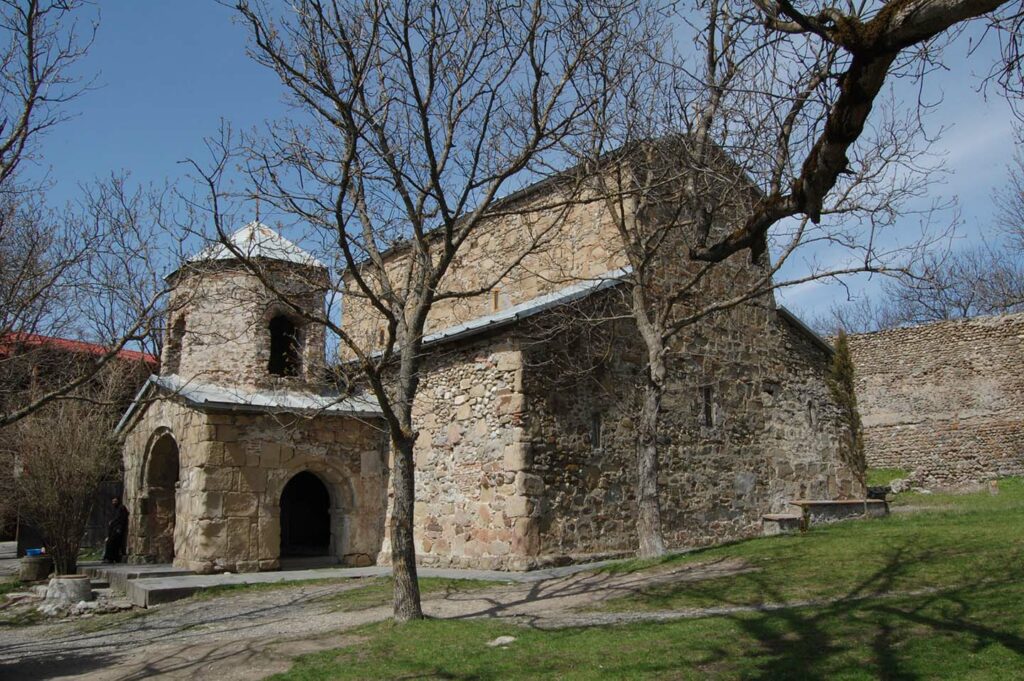
In 770s, Catholicos Clementos built a new church in Zedazeni monastery. It is a basilica of almost square plan, with two pairs of piers. Building material of the basilica – roughly cut stone is indicative of reduced material resources of the Georgian church in the eighth century.
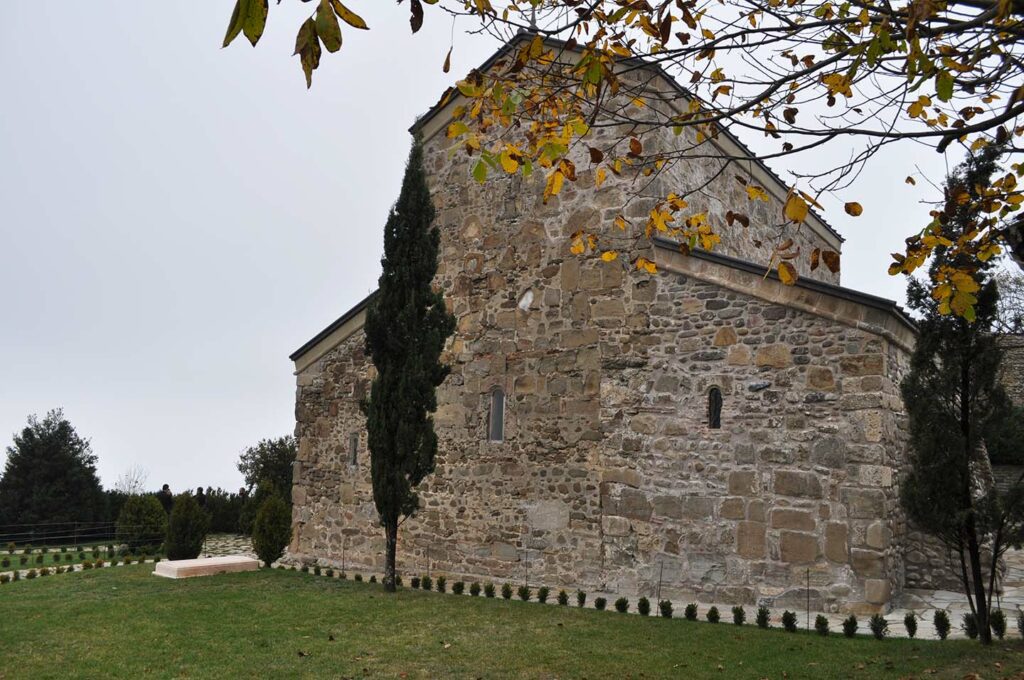
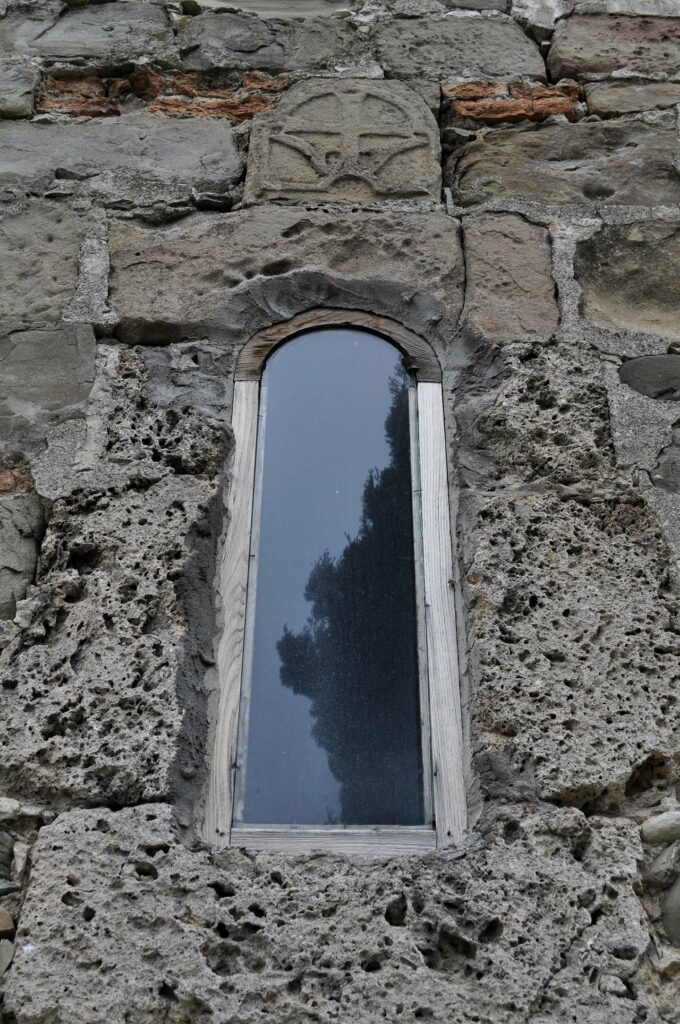
The building is plain from the outside, its decoration is limited to two carved images of the
flourishing cross on the eastern façade, one above the sanctuary window and the other in
the gable.
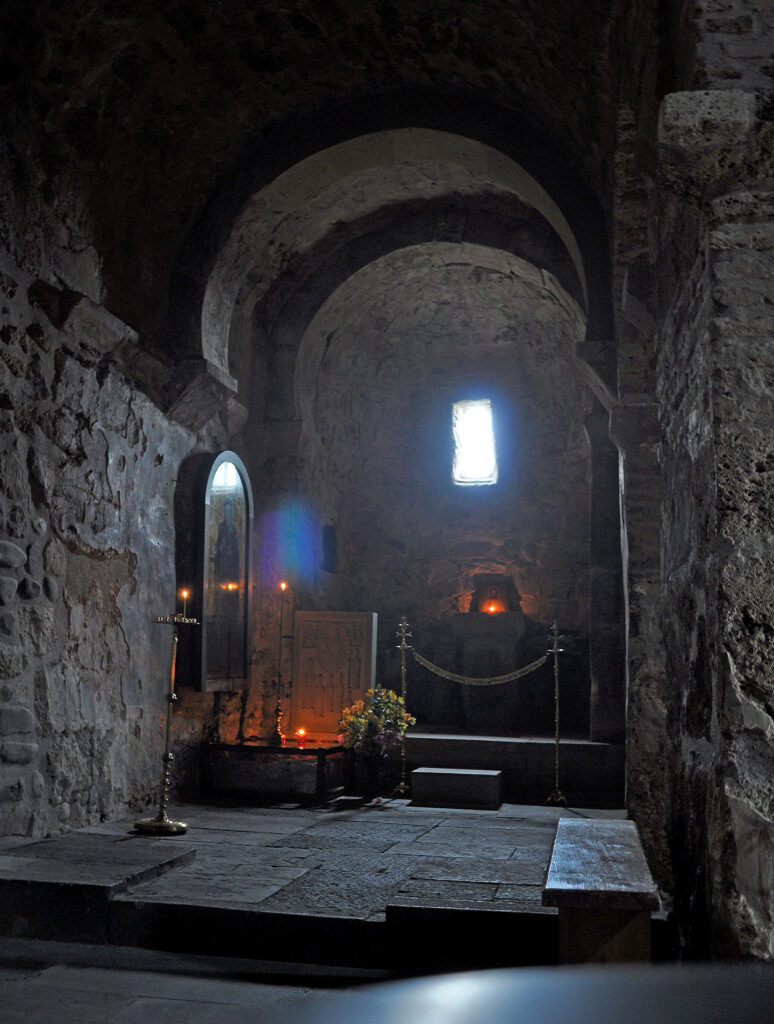
The northern aisle of the basilica incorporated the sixth-century chapel with the stone tomb
of St. John and the spring well. The architecture of the chapel differs from that of the
basilica itself both in forms and in building material. Supporting arches of its barrel vault
have a horseshoe shape and are built of large hewn stones.
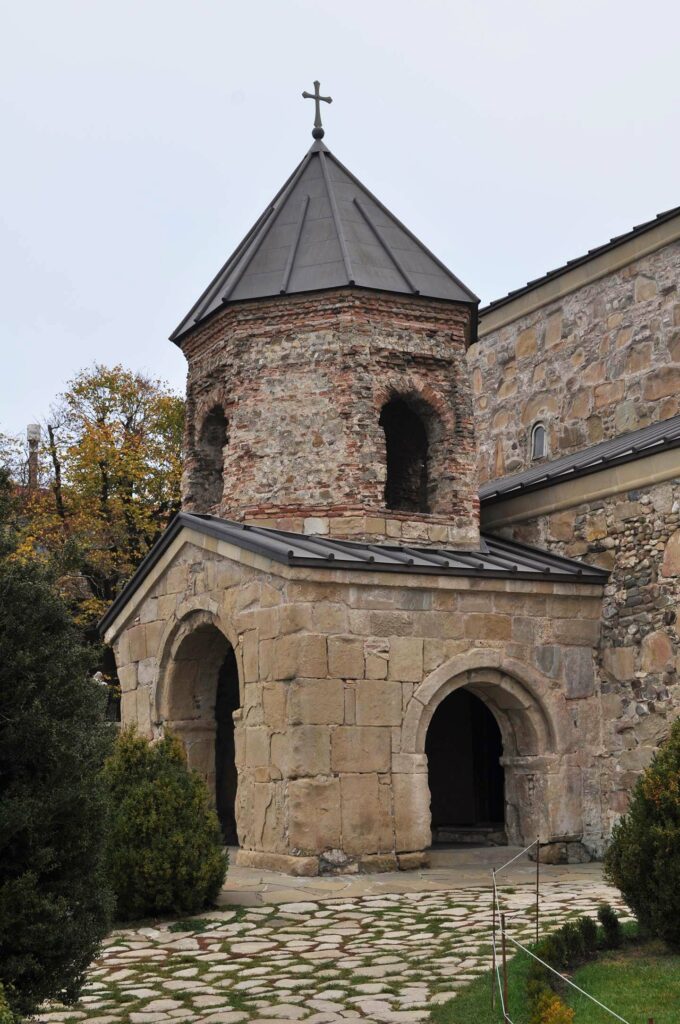
The main door to the church is from the south. An arched porch constructed in the ninth or
tenth centuries precedes the entrance to the church. An octagonal belfry with a pyramidal
roof was added atop the porch in the eighteenth century as well as a defensive circuit wall
surrounding the precinct from three sides.


